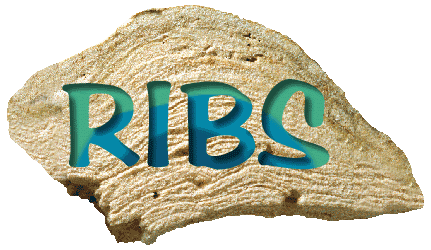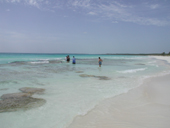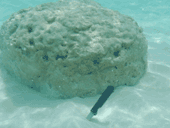
Layered deposits of calcium carbonate known as stromatolites are the oldest macroscopic evidence of life on earth. First appearing in the geological record at least three and a half billion years ago, stromatolites were widespread in ancient shallow marine seas and are still forming in modern environments such as the Bahamas. Stromatolites are neither biotic fossils nor abiotic structures. Rather, they represent the complex interactions of microbes, sediments and the environment.
Stromatolites were abundant and
diverse during much of early Earth history, and are the main source of
information on early life for 85% of the rock record. Starting 600 to
800 million years ago, there was, however, a prominent decline in the
abundance of stromatolites that has been attributed various processes,
ranging from the evolution of competing organisms to changes in ocean
chemistry .
Despite the evolutionary significance of stromatolites, the relative roles
of microbial and environmental factors in stromatolite formation and decline
are poorly known. Interpretation of the geologic record of stromatolites
will require a system-level understanding of ecosystem processes in modern
analogs that can account for successions of microbial communities, stromatolite
accretion, and cementation into a geological preservable structure.
A major goal of the RIBS project has been to investigate the role of microbes in stromatolite formation in open marine environments equivalent to those of many Precambrian platforms. We have assembled a team of researchers with diverse backgrounds and expertise (see Team). Our multidisciplinary approach integrates detailed microbiological and geological analyses in field (see Field studies) and lab-based studies (see Lab investigations), using novel and innovative techniques (see Publications). Additional studies involve comparisons between stromatolites forming in open marine system (e.g. Highborne Cay, Little Darby Cay) and other microbial deposits forming in more restricted environments (Storr's Lake, Little Darby Cay salt ponds).
COMING SOON FOR 2014: Little Darby Cay Research Station
Check out the RIBS Brochure (page1, page2)!
 |
 |
 |
 |
 |

 FUNDED IN PART BY THE NATIONAL SCIENCE FOUNDATION AND NASA
FUNDED IN PART BY THE NATIONAL SCIENCE FOUNDATION AND NASA 